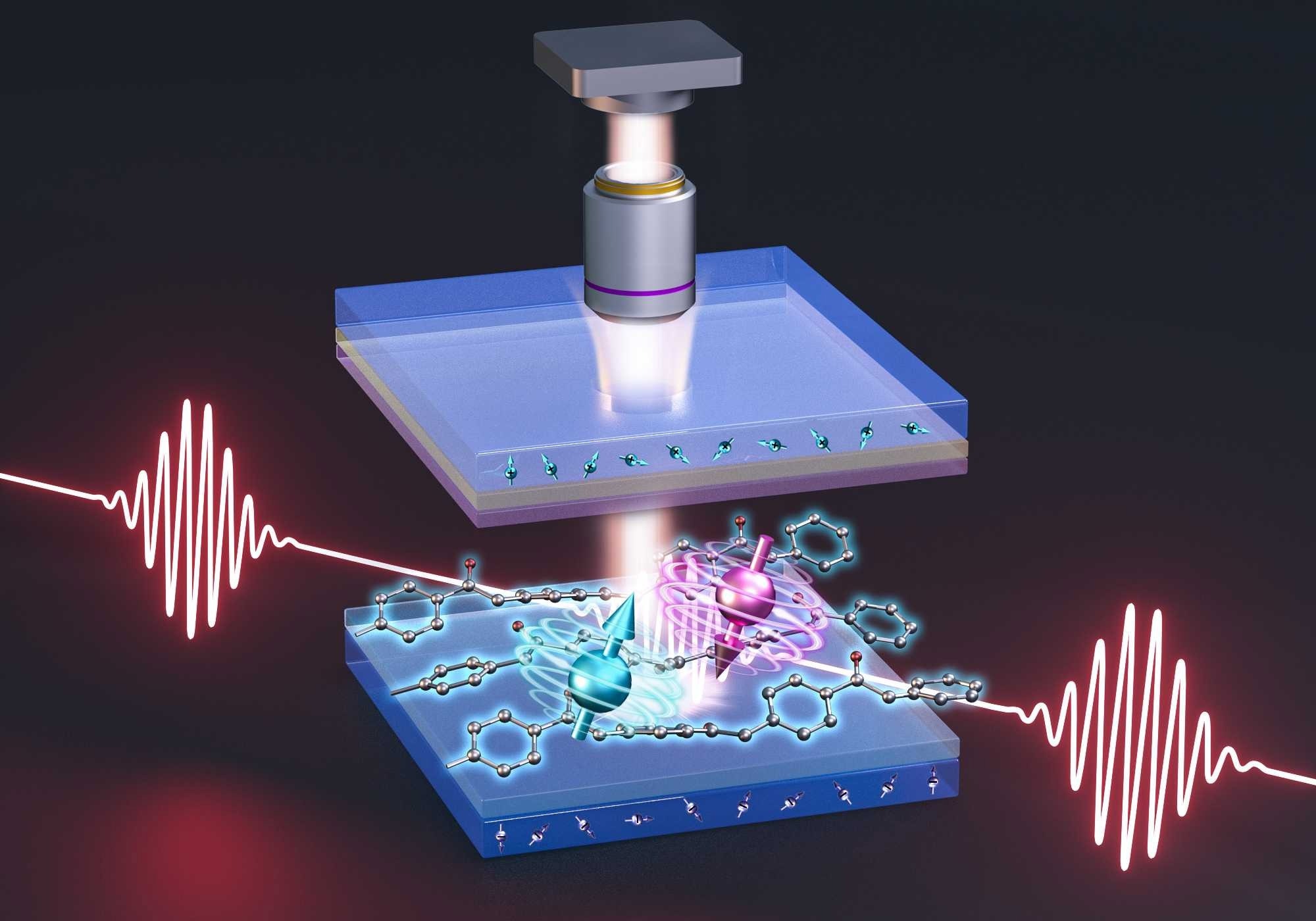As a result of the new chip-scale method, smartphones could one day become portable quantum sensors that use organic light-emitting diodes (OLEDs) for magnetic fields to image magnetic fields.

An illustration of the spatially-resolved ODMR (optically detected magnetic resonance) system for magnetic field imaging. Image Credit: ARC Center of Excellence in Exciton Science
At the ARC Center of Excellence in Exciton Science, scientists from the University of New South Wales (UNSW) Sydney have illustrated that OLEDs, a kind of semiconductor material that is generally discovered in smartphone screens, flat-screen televisions, and other digital displays, can also be used to map magnetic fields using magnetic resonance.
The sensing of magnetic fields has significant applications in scientific research, medicine, and industry.
Published in the renowned journal Nature Communications, this method is capable of functioning at a microchip scale and — unlike other common methods — does not need any input from a laser.
Most of the present quantum sensing and magnetic field imaging equipment is comparatively large and costly, requiring either optical pumping (from a high-powered laser) or very low cryogenic temperatures. This restricts the device integration potential and commercial scalability of such methods.
On the other hand, the OLED sensing device prototyped in this work would eventually be compact, adaptable, and mass-producible.
The techniques involved in achieving this are electrically detected magnetic resonance (EDMR) and optically detected magnetic resonance (ODMR). This is achieved using a camera and microwave electronics to optically detect magnetic resonance, the same physics which enables Magnetic Resonance Imaging (MRI).
With the help of OLEDs for ODMR and EDMR relies on properly utilizing the spin behavior of electrons when they are in the vicinity of magnetic fields.
Using OLEDs for EDMR and ODMR requires correctly harnessing the spin behavior of electrons when they are in proximity to magnetic fields.
Our device is designed to be compatible with commercially available OLED technologies, providing the unique ability to map magnetic field over a large area or even a curved surface. You could imagine using this technology being added to smartphones to help with remote medical diagnostics, or identifying defects in materials.
Dane McCamey, Professor, University of New South Wales
McCamey is also an Exciton Science Chief Investigator.
First author, Dr. Rugang Geng of UNSW and Exciton Science added, “While our study demonstrates a clear technology pathway, more work will be required to increase the sensitivity and readout times.”
Journal Reference:
Geng, R., et al. (2022) Sub-micron spin-based magnetic field imaging with an organic light emitting diode. Nature Communications. https://doi.org/10.1038/s41467-023-37090-y.